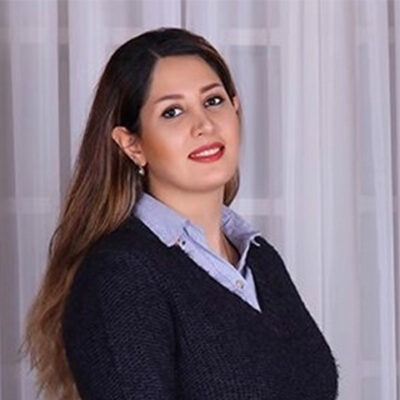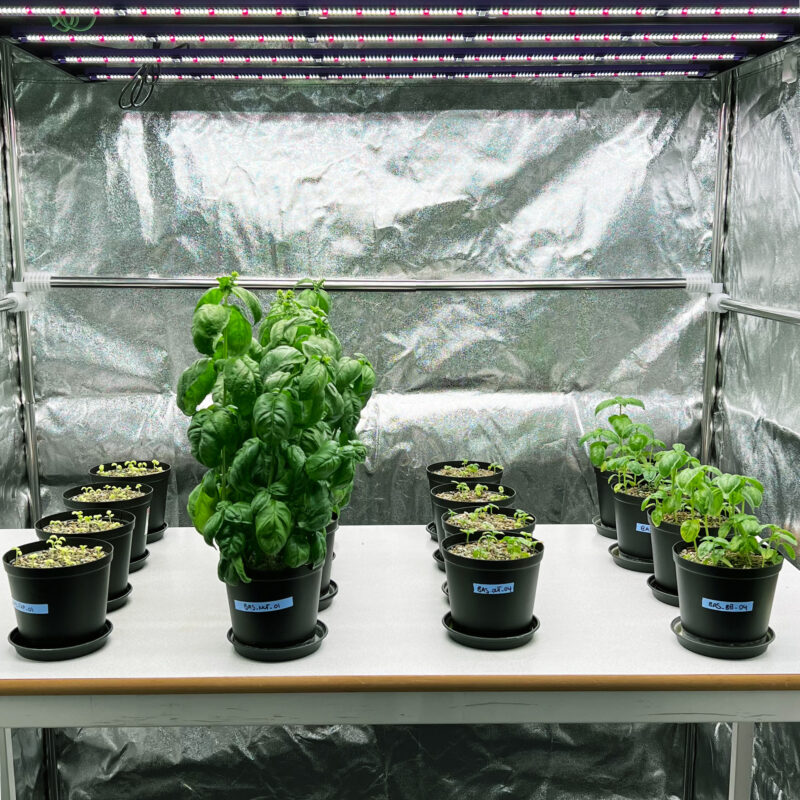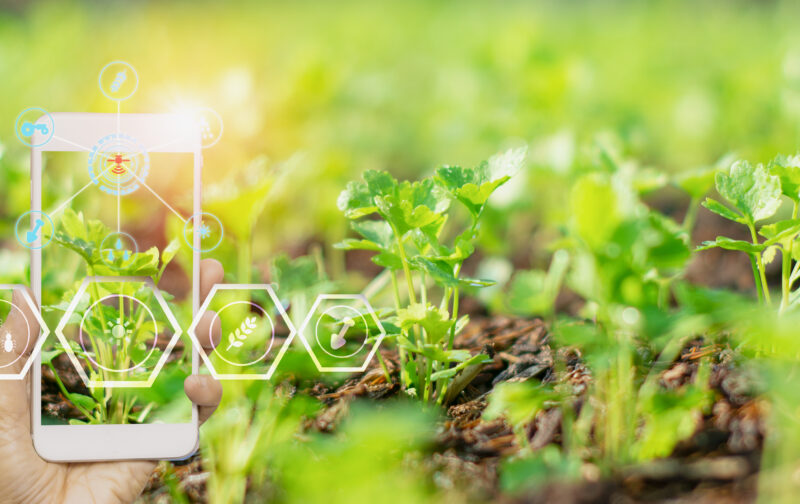Circular and sustainable indoor farming and food production
Hi there, Reyhaneh Gorji, PhD student at Mälardalen University. What are you working on right now?
– My focus is on cultivating leafy greens and other edible crops sustainably, with a particular interest in exploring the utilization of wastewater and its by-products, such as biochar and hydrochar, as eco-friendly and alternative fertilizers. This aligns with our overarching goal of making farming and food production more sustainable and circular. In addition to this, I’m involved in another interconnected project, Aqua2Farm, that integrates NIR spectroscopy* and hyperspectral imaging for real-time plant monitoring. This technology enables us to make timely decisions regarding irrigation, fertilizer application, and disease management. This real-time approach ensures optimal plant growth and resource utilization.
You have conducted pot experiments. Could you tell us about them?
– We tested various water streams, including tap water (negative control), liquid fertilizer (positive control), and different types of treated wastewater from the facility (before biological treatment & outgoing water that leaves the wastewater treatment plant). These experiments were done in controlled indoor conditions (18-20°C, 40-50% humidity) with a growth medium called zeolite which simulates a hydroponic system.

Do you have any results so far?
– Yes, some preliminary findings include the following:
- Certain metals like Cobalt and Chromium in wastewater-treated plant shoots were within safe limits, suggesting that treated wastewater could be used safely in agriculture.
- The levels of other metals, such as Mercury, Nickel, Vanadium, Arsenic, Cadmium, and Lead, were below detection limits.
- There were no significant differences in total nitrogen and dry matter composition between the positive control and the wastewater samples before biological treatment. This indicates similar nutrient content, which could support the use of wastewater-based fertilizers for enhanced plant growth.
- Physical parameters like plant height, total weight, and the number of leaves, demonstrated notable distinctions among treatments. The positive control consistently performed better than the wastewater samples before biological treatment, but the latter showed promising results compared to outgoing water and tap water.
What is the goal of the project?
– The ultimate aim of this research is to contribute to a more environmentally friendly and resource-efficient agriculture sector by reusing wastewater and its by-products as fertilizers. This reduces waste and the environmental impact of conventional synthetic fertilizers. This benefits not only the agricultural community and wastewater treatment plants but also society as a whole by promoting sustainable and circular food production.
What are the benefits of integrated farming systems at wastewater plants?
– They reduce the need for resource transportation, leading to a lower carbon footprint and promoting sustainable resource management. It allows the hydroponic farm to function as a circular nutrient consumer, yielding food production. Simultaneously, the wastewater treatment plant benefits from an added treatment step, ensuring purification of the effluent before its release into the surrounding environment.
*Near-infrared spectroscopy (NIRS) is a spectroscopic method that uses the near-infrared region of the electromagnetic spectrum (from 780 nm to 2500 nm)
Learn more about the project in this presentation


